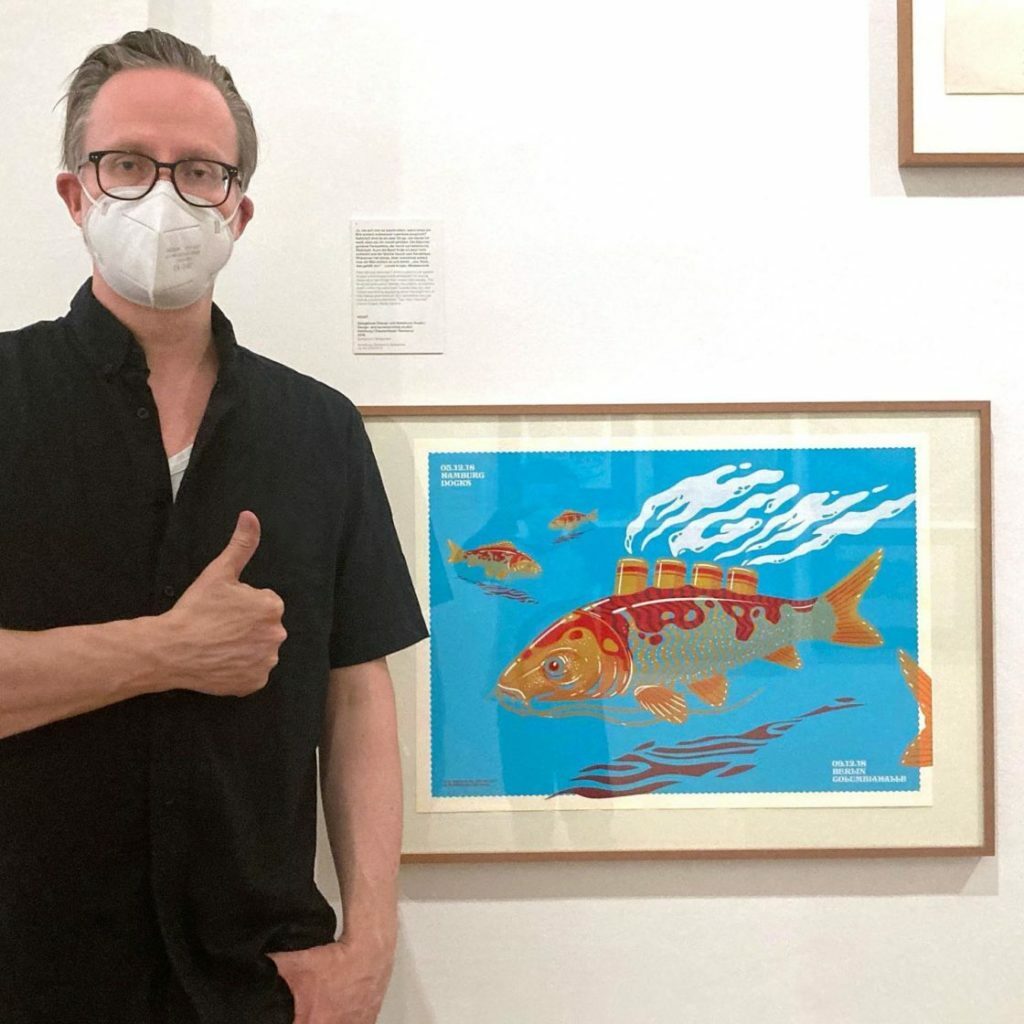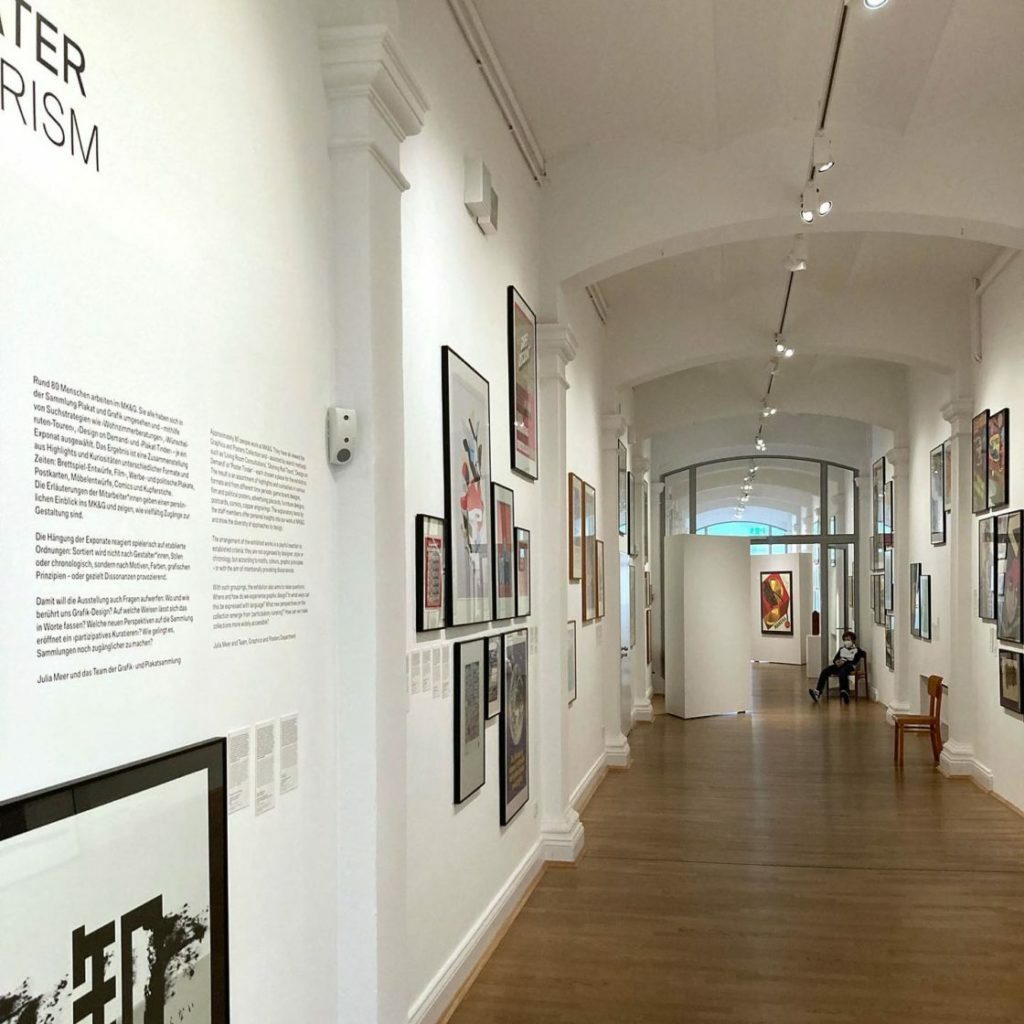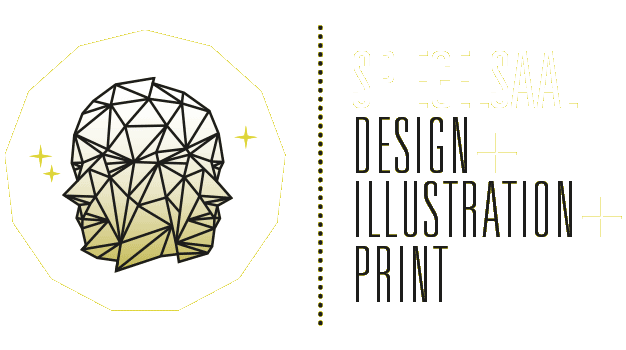“Tigers, Tampons and Tourism“
Yeesss, the museums in Hamburg are open again!
At last, Torsten could check out the “Tigers, Tampons and Tourism“ exhibition at Museum Kunst und Gewerbe Hamburg, collectively curated by the staff of the museum, that features our MGMT poster.
The exhibition is running until July 4.
And we do have one or two copies left: https://spiegelsaal.net/shop/mgmt/

“How can you describe it when a picture just speaks to your unconscious mind somehow? Of course, there are a few things that I know I like visually. The blue/red/gold colour palette, the slightly surrealistic motif. I think the band itself is quite okay too, and there’s something appealing about the slight hint of the Catbus phenomenon. But sometimes you just look at a picture and think, ‘Yep. Yes, I like that!’
Leonie Kruger, Media Service
MGMT
Spiegelsaal (Design und Siebdruck-Studio/Design- and screenprinting studio)
Hamburg / (Deutschland / Germany)
Siebdruck / Silkscreen
Schenkung/Donated by: Spiegelsaal
Inv.-Nr. EP2019.170


“Approximately 80 people work at MK&G. They have all viewed the Graphics and Posters Collection and – assisted by search methods such as ‘Living Room Consultations’, ‘Divining Rod Tours’, ‘Design on Demand’ or ‘Poster Tinder’ – each chosen a piece for the exhibition. The result is an assortment of highlights and curiosities in variou: formats and from different time periods: game board designs, film and political posters, advertising placards, furniture designs, postcards, comics, copper engravings. The explanatory texts by the staff members offer personal insights into our work at MK&G and show the diversity of approaches to design.
The arrangement of the exhibited works is a playful reaction to established criteria: they a re not organised by designer, style or chronology, but according to motifs, colours, graphic principles – or with the aim of intentionally provoking dissonances.
With such groupings, the exhibition also aims to raise questions: Where and how do we experience graphic design? In what ways can this be expressed with language? What new perspectives on the collection emerge from ‘participatory curating’? How can we make collections more widely accessible?”
Julia Meer and Team, Graphics and Posters Department

